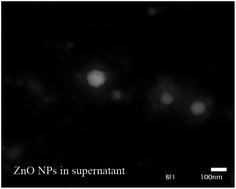Challenge to assess the toxic contribution of metal cation released from nanomaterials for nanotoxicology – the case of ZnO nanoparticles†
Abstract
The identification of physicochemical factors that govern toxic effects of nanomaterials (NMs) is important for the safe design and synthesis of NMs. The release of metal


 Please wait while we load your content...
Please wait while we load your content...